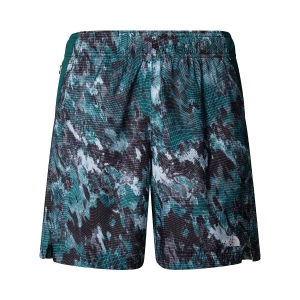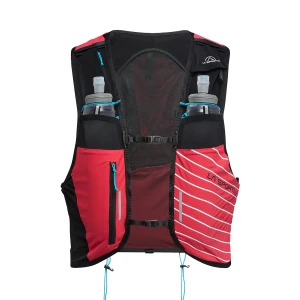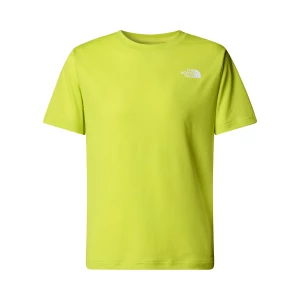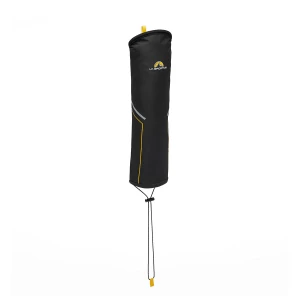Zagori
[blank h=”30″]
[/blank]
[column parallax_bg=”disabled” parallax_bg_inertia=”-0.2″ extended=”” extended_padding=”1″ background_color=”” background_image=”” background_repeat=”” background_position=”” background_size=”auto” background_attachment=”” hide_bg_lowres=”” background_video=”” vertical_padding_top=”0″ vertical_padding_bottom=”0″ more_link=”” more_text=”” left_border=”transparent” class=”” id=”” title=”” title_type=”single” animation=”none” width=”1/1″ last=”true”]
[column_1 width=”1/2″ title=”” title_type=”single” animation=”none” implicit=”true”]

Source: Konstantinos Vasilakis
[/column_1]
[column_1 width=”1/2″ last=”true” title=”” title_type=”single” animation=”none” implicit=”true”]
Zagori is a gifted mountainous area with outstanding natural beauty, in the north part of Epirus, near Ioannina, Greece. The history of the area formed a special historic and cultural environment, where, despite the multiplicity of small units (46 villages), Zagori stands out as an integral unity continuing its journey through time.
The name “Zagori” is of Slavic origin. The preposition “za” means “beyond” and the word “gora” means “mountain”, therefore “the place beyond the mountain.
The Vikos Gorge and the river Voidomatis now form the core of the National Park Vikos Aoos. The area of Vikos-Aoos because of its significant geological and geomorphological value, it is recognized as “Vikos-Aoos Geopark” and joined the UNESCO European Geoparks Network in October 2010.
Today, the Geopark features in rank 4 in Greece, including the Vikos Gorge and Voidomatis river, the Aoos ravine, the mountains Tymfi, Trapezitsa and Smolikas. The region also belongs to the protected ecosystem zone Natura 2000. The Park is characterized as one of the most impressive in Greece and often called the Forest of grand peaks. It is extended from the ravine of Aoos in the north to the Vikos gorge in the south, which is listed as the deepest-steepest in world. The tall and imposing peaks of Tymfi Mountain, sometimes sunny and sometimes snowy, capture the visitor. The Gamila peak (2.497m) is the highest with the rest to follow: Astraka (2.436m), Lapatos (2/251m), Ploskos (2.377m), Karteros (2.478m), Megala Litharia (2.467m), Tsouka Rossa (2.377m).
[/column_1]
[/column]
[column parallax_bg=”disabled” parallax_bg_inertia=”-0.2″ extended=”” extended_padding=”1″ background_color=”” background_image=”” background_repeat=”” background_position=”” background_size=”auto” background_attachment=”” hide_bg_lowres=”” background_video=”” vertical_padding_top=”0″ vertical_padding_bottom=”0″ more_link=”” more_text=”” left_border=”transparent” class=”” id=”” title=”” title_type=”single” animation=”none” width=”1/1″ last=”true”]
[column_1 width=”1/2″ title=”” title_type=”single” animation=”none” implicit=”true”]
Several potholes (vertical deep caves) are found in Tymfi, among of which the largest of the Forest and second in the world, is called “Provatina” (the word in Greek means “ewe”) at a depth of 407m. Apart from these high peaks, Tymfi Mountain features some other natural geological formations. Due to the high altitude, there are not many springs on the plateaus. However, in the parts where the phenomenon of flysch appears, ponds are formed called “dragon lakes”. The biggest lake is the Dragon lake of Tymfi, situated at 2.050m of altitude associated with various legends and stories of the region. It’s also worth mentioning the beautiful waterfalls of Iliochori, a village that we come across.
Moreover, it is not only the natural beauty of the Alpine landscape that catches the eye. It is also the biodiversity of the region, presenting a variety of different ecosystems that comprise an ideal environment to maintain rare species of flora and fauna. So far, it is widely known that 10 species of amphibians, 21 species of reptiles, 133 species of birds, 24 species of mammals and quite few species of fish are under legal protection.
The presence of man is combined in harmony with the marvelous landscape. The 46 villages perched on steep slopes, architectural masterpieces, with impressive mansions, the cobbled streets, the arched bridges and their rich tradition, leave no visitor unmoved! In addition, hospitality, local cuisine and tourist facilities will become among the memories you treasure.
[/column_1]
[column_1 width=”1/2″ last=”true” title=”” title_type=”single” animation=”none” implicit=”true”]

Source: Konstantinos Vasilakis
[/column_1]
[/column]
[column parallax_bg=”disabled” parallax_bg_inertia=”-0.2″ extended=”” extended_padding=”1″ background_color=”” background_image=”” background_repeat=”” background_position=”” background_size=”auto” background_attachment=”” hide_bg_lowres=”” background_video=”” vertical_padding_top=”0″ vertical_padding_bottom=”0″ more_link=”” more_text=”” left_border=”transparent” class=”” id=”” title=”” title_type=”single” animation=”none” width=”1/1″ last=”true”]
[column_1 width=”1/2″ title=”” title_type=”single” animation=”none” implicit=”true”]

Source: Konstantinos Vasilakis
[/column_1]
[column_1 width=”1/2″ last=”true” title=”” title_type=”single” animation=”none” implicit=”true”]
Four of these villages are included in the Park representing this special architecture technique. These are Megalo Papigo, Mikro Papigo, Monodendri and Vikos. Around the Park we find six more villages: Aristi, St. Minas, Vitsa, Kapesovo, Vradeto and Vrisochori. The inhabitants of Zagori and the skilled craftsmen managed to connect the rivers of the region with a unique way, building a network of single, double or triple arched bridges.
Within the National Park seven stone-built bridges are found. The one in Konitsa is the grandest. The story behind each bridge is closely linked to a person or a family (http://petrinagefiria.com). So, just to mention a few, the double-arched “Misios Bridge” in Vikos Gorge was built in 1748, and it connects the villages Koukouli and Vitsa. Nearby, we find the “Noutsos Bridge”, built in 1750, known as the “Kokkoros Bridge”. The “Plakidas Bridge” or “Kalogeriko”(the word in Greek means Monks) is a triple-arched bridge near the villages Kipi and Koukouli. This used to be wooden and funded by a monk named Serafim. In 1814, it was re-built in stone. In 1865 the bridge was repaired by Alexis Plakidas and it is the most famous bridge in Zagori.
[/column_1]
[/column]
[column parallax_bg=”disabled” parallax_bg_inertia=”-0.2″ extended=”” extended_padding=”1″ background_color=”” background_image=”” background_repeat=”” background_position=”” background_size=”auto” background_attachment=”” hide_bg_lowres=”” background_video=”” vertical_padding_top=”0″ vertical_padding_bottom=”0″ more_link=”” more_text=”” left_border=”transparent” class=”” id=”” title=”” title_type=”single” animation=”none” width=”1/1″ last=”true”]
[column_1 width=”1/2″ title=”” title_type=”single” animation=”none” implicit=”true”]
In the area there are also many monasteries. In the inner part of the Aoos gorge we find the Monastery of Stomio. The monastery was initially built in the 15th century on the slopes of Trapezitsa, but in 1774 it was relocated in the foothills of Gamila. The Monastery of Agia Paraskevi is located about 800m from the central square of the village Monodendri. It is built literally on the edge of the Vikos Gorge! The Prophet Elias Monastery in Vitsa was built in the 15th century on a holt above the village Vitsa. There is also the Monastery of Panagia Spiliotissa, found on a hill near the Voidomatis river, close to the village Aristi, built in 1665. The Monastery of St. Ioannis Rogovos is located about two kilometers out of the village Tsepelovo and it is dedicated to St. John the Baptist. It was built during the Byzantine era in the 11th century. After its total destruction it was re-built in the 18th century. Finally, the Monastery of St. Anargyroi, dated back to 1658, stands in the Voidomatis river gorge with lush vegetation, vertical cliffs, caves, trees, running waters, a paradise on earth.
[push h=”50″]
[button id=”” style=”filled-small” class=”my-call-to-action” align=”right” link=”https://zagorirace.gr/en/useful-info/” linkTarget=”_self” bgColor=”accent1″ hover_color=”accent4″ font=”18″ icon=”arrow-right1″ icon_placement=”right” icon_color=”accent8″]Useful Info[/button]
[/column_1]
[column_1 width=”1/2″ last=”true” title=”” title_type=”single” animation=”none” implicit=”true”]

Source: Konstantinos Vasilakis
[/column_1]
[/column]
[blank h=”30″]
[/blank]
Discover Ioannina and places near by
[column parallax_bg=”disabled” parallax_bg_inertia=”-0.2″ extended=”” extended_padding=”1″ background_color=”” background_image=”” background_repeat=”” background_position=”” background_size=”auto” background_attachment=”” hide_bg_lowres=”” background_video=”” vertical_padding_top=”0″ vertical_padding_bottom=”0″ more_link=”” more_text=”” left_border=”transparent” class=”” id=”” title=”” title_type=”single” animation=”none” width=”1/1″ last=”true”]
[column_1 width=”1/2″ title=”” title_type=”single” animation=”none” implicit=”true”]
[/column_1]
[column_1 width=”1/2″ last=”true” title=”” title_type=”single” animation=”none” implicit=”true”]
Using the picturesque villages of Zagori as your base, you have many options for day trips. The city of Ioannina, at the crossroads of civilizations, where the Islamic , the Orthodox and the Jewish cultures meet, is a wonderful choice. Incredible museums, a unique primeval cave, the synagogue, the little island-without a name- in the lake Pamvotis with its own population, the walk around the castle, are some features of the city’s identity. (http://www.travelioannina.com)
Also, apart from Ioannina, there are some other places well worth a visit. These are:
- The traditional village of Metsovo, home of some great men and benefactors of the country.
- The stone villages of Tzoumerka, Syrrako and Kalarrytes, popular and historic villages.
- The “Mastorochoria” of Pindos Mountain. The name derives from the Greek word “mastoras” meaning “gifted craftsman”. The villages are named after their craftsmen who created masterpieces of stone.
During the summer, the coastline of the Ionian Sea, offers a complete change of scenery. The spectacular pebbly and sandy beaches, the crystal clear waters, the sun and the surroundings will not let you down. The cosmopolitan Parga, which looks and feels as if you are on an Aegean island, is a gem, located in the regional unit of Preveza, in the northwestern part of Epirus. The other famous destination, Syvota, is located very close to the Igoumenitsa port, where beautiful bays like fjords, small islands, turquoise waters present the ultimate escape.
[/column_1]
[/column]























